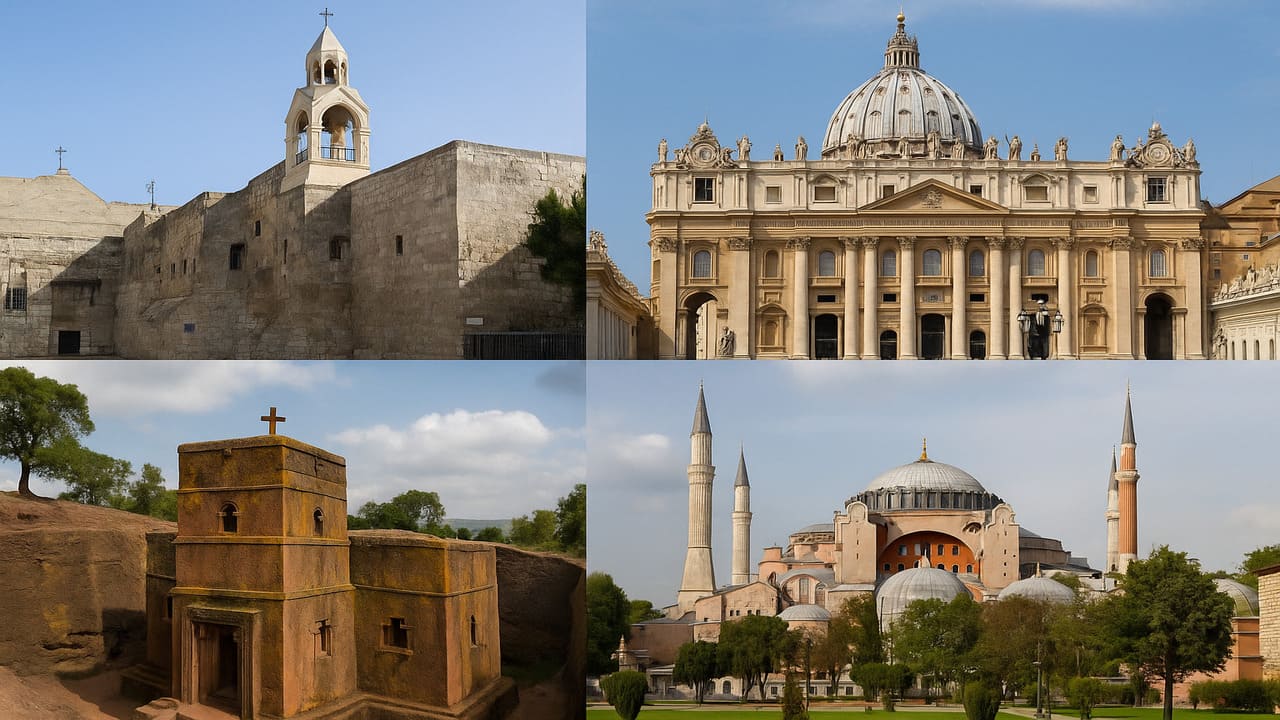
Thorn Ville Church – Across continents and centuries, churches have stood as architectural wonders, spiritual havens, and silent witnesses to the rise and fall of empires. These ancient sanctuaries are more than just buildings they are testaments to enduring faith, human creativity, and the power of sacred space. Let us journey through some of the world’s most iconic ancient churches that continue to inspire awe not only for their historical significance, but also for the role they still play in communities today.
Believed to be the birthplace of Jesus Christ, the Church of the Nativity is one of the oldest continuously operating churches in the world. Commissioned in the 4th century by Emperor Constantine, it holds immense religious and historical significance for Christians of all denominations. Beneath the church lies a grotto that many believe marks the exact spot of the Nativity.
Though modest in external appearance, the interior offers glimpses of ancient mosaic floors and centuries-old murals a sacred tapestry of devotion through the ages.
Also Read : Amazon Invests $5 Billion to Boost Cloud Infrastructure
While the current basilica was completed in the 16th century, it sits atop the site of the original 4th-century church built by Constantine over the tomb of St. Peter. The present-day St. Peter’s Basilica is one of the largest and most celebrated churches on Earth, a masterpiece of Renaissance architecture designed by Michelangelo, Bramante, and Bernini.
Its iconic dome dominates the skyline of Vatican City, and the grandeur of the interior with soaring ceilings, sculptural masterpieces, and spiritual symbolism reflects both earthly power and heavenly aspiration.
Recognized as the world’s first cathedral, Etchmiadzin was built shortly after Armenia became the first country to adopt Christianity as a state religion. With its roots tracing back to 301 AD, the cathedral stands as the spiritual heart of Armenian Christianity.
Its architecture combines local styles with early Christian designs, and it remains a functioning center of worship and pilgrimage to this day, preserving relics and manuscripts of immense historical value.
Also Read : Basilica of San Lorenzo: A Testament to Early Western Christianity in Milan
Carved directly into red volcanic rock, the Church of Saint George is one of eleven medieval monolithic churches in Lalibela, Ethiopia. This architectural feat both engineering and spiritual was design to mimic Jerusalem, serving as a “New Jerusalem” for Ethiopian Orthodox Christians who could not make pilgrimages to the Holy Land.
With no bricks or blocks, the entire church was excavate top-down from a single piece of rock. Its cross-shaped design and subterranean passages make it a mystical and breathtaking site.
Originally built as a Byzantine cathedral, Hagia Sophia served as the spiritual and political heart of Eastern Christianity for nearly a millennium. Later converted into a mosque and now functioning as both a mosque and museum, Hagia Sophia bridges the worlds of Christianity and Islam through its layered history.
The building’s massive dome, once considered an engineering miracle, still stuns architects and visitors alike. Its mosaics, calligraphy, and fusion of styles embody centuries of cultural exchange and spiritual evolution.
While towering cathedrals and monumental basilicas dominate skylines, many of the world’s most fascinating churches are hidden beneath the earth. In our next article, we’ll explore another Most Iconic Ancient Churches subterranean sanctuaries of Cappadocia, the catacombs of Rome, and the crypt chapels of England revealing how faith flourished even in hidden and persecuted places.
Thornville Church - Your Source for Biblical Inspiration - Across changing empires and cultures, historic churches preserved Christian teachings with…
Thornville Church - Your Source for Biblical Inspiration - The miracle of spiritual deliverance appeared in Philippi when Paul freed…
Thornville Church - Your Source for Biblical Inspiration - Historians now highlight how women in early church shaped theology, leadership,…
Thornville Church - Your Source for Biblical Inspiration highlights how church orientation toward east shapes Christian worship, architectural symbolism, and…
Thornville Church - Your Source for Biblical Inspiration reports that recent necropolis discoveries at Colossae are reshaping how scholars read…
Thornville Church - Your Source for Biblical Inspiration highlights how oldest church sites 2025 continue to stand as living testaments…